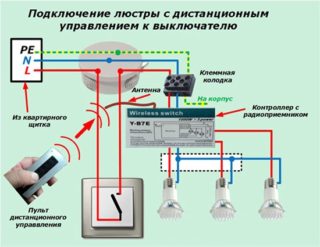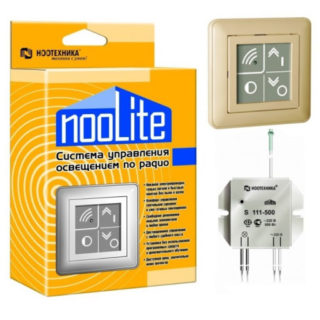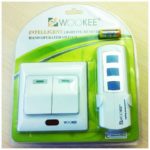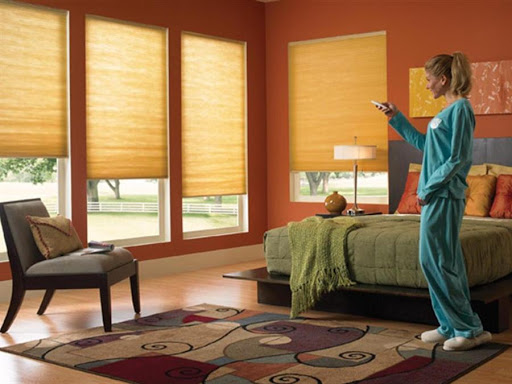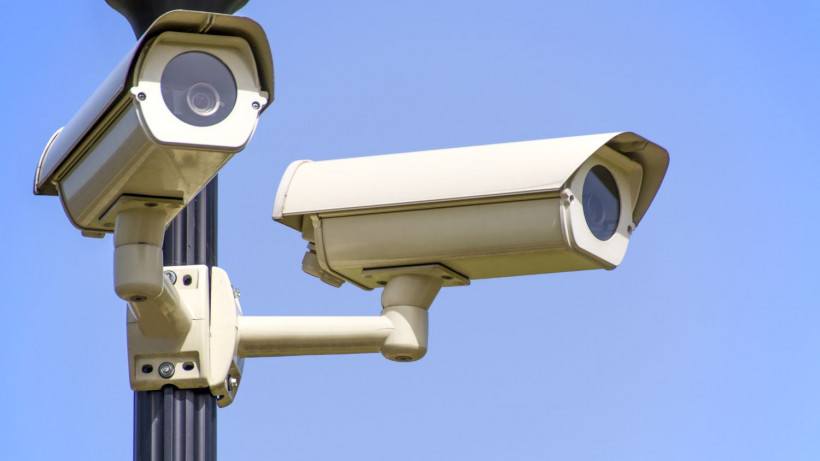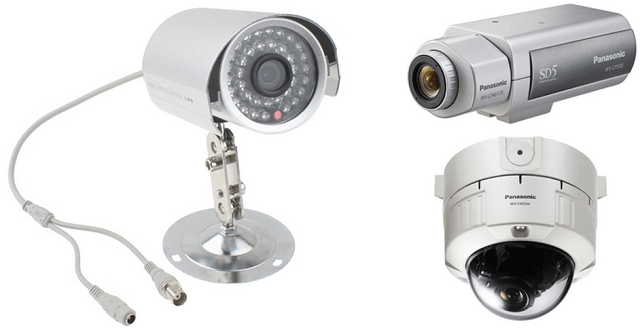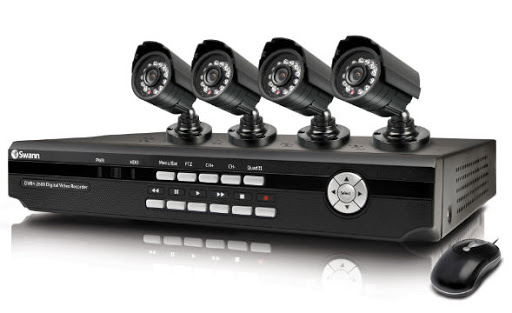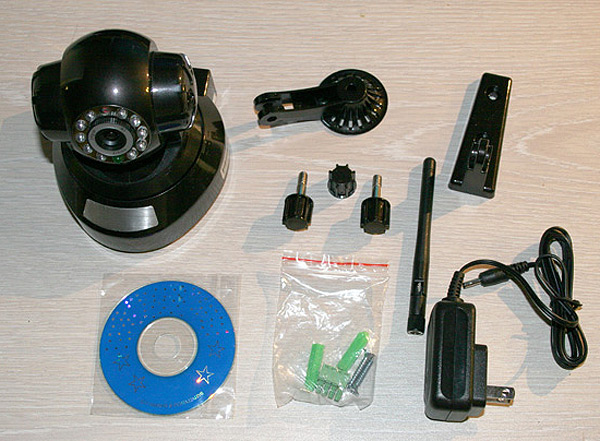Remote controlled lighting switches can be found in residential and office buildings, industrial buildings and entertainment venues. The remote switch allows you to activate and extinguish the lamps, adjust the parameters of their glow. These options improve the quality of life, make the living conditions in the room more convenient, pleasant and comfortable. To choose the right switch with a remote control, you should familiarize yourself with the device and the principle of operation of the models on sale, understand their advantages, disadvantages, installation and operation features.
Using the remote switch
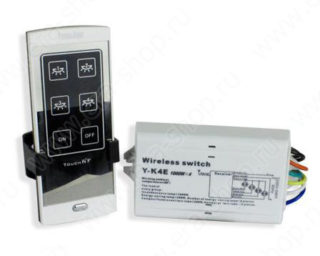
A typical remote light switch is a two-piece device:
- Transmitter (remote control). Equipped with its own energy source, the device generates a signal with certain parameters that correspond to the settings of the second part of the product.
- Receiver. It is an indicator in which the received signal is processed and the functions included in the program are performed.
The use of a wireless lighting control system gives the following possibilities:
- turning on one or several lamps at once, addressable or throughout the room;
- setting the strength of the glow;
- setting the parameters of the light range when using LED products.
Remote switching off of the light can be carried out using a portable remote control or with remote access, when the signal is transmitted via the Internet or over a closed radio channel. This option is popular among citizens who leave their property for a long time. Periodic switching on of lamps creates the effect of presence and scares off intruders.
Varieties of switches
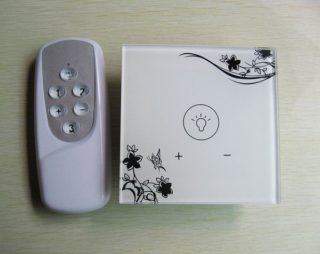
On sale is a wide range of household switches controlled by a remote control and a telephone, designed for power consumption in the range of 0.5-3.5 kW.
- Delayed. After switching on, the lamps remain on until they are turned off forcibly. Another option is products that glow for 10-60 seconds after activation. These are usually installed in corridors and other passages.
- With channel tuning. These are the most complex and expensive devices designed to operate in different modes. Products illuminate in the same range or automatically switch the signal in accordance with the settings.
- Wireless. The best option for those who prefer to control lighting from the comfort of their couch. The option is convenient in that in the dark, you can turn on the lamps in the required rooms without moving in the dark from switch to switch.
- Sensory. Products are produced with displays through which they are configured and programmed.
One or more types of remote switches can be used to furnish a house or apartment. The choice is determined by their own priorities and financial capabilities.
Control principle
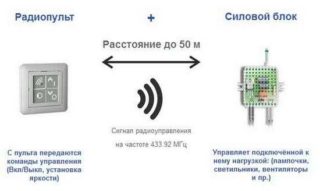
The industry produces devices that work according to the same principle, but differ in the technology used.
The switch sensors can be controlled by radiation generators of the following types:
- Infrared. The source is a remote control that emits infrared waves of a specific spectrum. A feature of such devices is the need to locate the transmitter and receiver in the field of view. The signal from the walls is not reflected, so the remote control must be directed at the receiver window, which is not always convenient. Intermediate repeaters can be installed to control remote receivers.
- Radio wave. This is a more convenient and functional option. Radio waves propagate in bulk, passing through some obstacles and bending around others. Thanks to this property, it is possible to turn on lamps located at a considerable distance from the control panel, including in rooms with closed doors.
Devices of both types can be used autonomously, as individual elements of an apartment, or used in the "Smart Home" system.
Remote Switch Selection Criteria
- the ability to connect with your own hands to save on the services of specialists;
- compliance of the frequency range and power with legal requirements;
- range of the signal and its passability;
- the number of options and their real need;
- dimensions and weight of the device;
- compliance of the receiver with the style and interior of the room;
A strong signal can cause malfunction of pacemakers and hearing aids.
Remote light switch connection
Any master with basic skills in working with household tools and knowledge of electricity can connect the remote switch.
For work you will need:
- roulette;
- pliers;
- screwdrivers;
- soldering iron;
- indicator;
- standard switch heat shrink tubing;
- insulating tape.
Safety precautions must be observed during installation. It is allowed to manipulate wires and parts only when the voltage is disconnected.
- Markup.
- Checking the functionality of the device prior to installation.
- Installing the receiver and power supply. For placement, it is allowed to use a switch glass or a lamp cover.
- Power off, electrical connection.
- Masking or decorating parts of the receiver and power supply.
- Connecting the network, checking the functionality of the structure, setting up (programming).
It is advisable to place the receiver in a key switch. It will duplicate the remote one if for some reason it fails.
Advantages and disadvantages of remote control devices
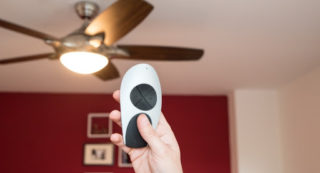
Like any electronic device, remote control switches have their pros and cons.
Advantages:
- improving the quality of life due to the convenience of controlling the lighting system;
- passive protection of housing from intruders;
- energy saving;
- longer lamp life;
- a wide range of products, allowing you to choose the desired model;
- ease of installation that does not require special skills;
- the ability to create an optimal level of brightness and glow mode.
Disadvantages:
- false positives;
- the signal intensity depends on the charge of the power supply;
- the risk of affecting the operation of pacemakers and hearing aids, sensitive electronic devices;
- signal distortion due to weather conditions.
Before deciding on the advisability of installing a remotely controlled lighting system, you need to evaluate all aspects of the issue, including your own financial capabilities.
Making a remote switch with your own hands
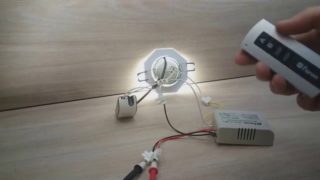
Making a switch on a remote control will allow you to spend time interestingly and save a little on the difference in the price of a factory-made and self-made product.
You will need to prepare the following details:
- old or new remote control;
- controller connecting to lighting fixtures;
- power supply for remote control.
Using a computer program, you need to calibrate the signal parameters for each channel in the network. To ensure guaranteed operation of the device, you should set a three-fold duplication of the command when you press the corresponding button.
Manufacturers overview
- Wookee. Works on radio waves. Signal bandwidth is 100 m outdoors and 20 m indoors. The total power of consumers is 1000 W.
- Nootechnics. The device is IR controlled. Differs in high build quality and reliability.
- Sapphire. Equipped with IR emitters and dimmers. The specified parameters are saved after turning off the light.
- Jung. Reliable and practical technology, designed to connect 30 channels with a total power of up to 3500 W.
To purchase quality products from the manufacturer, you should contact certified retail outlets.


